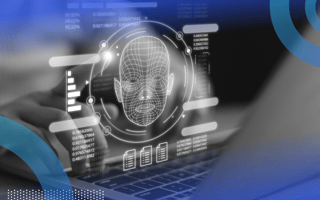News of deepfakes often surface with shocking incidents happening every now and then. From images being morphed to voices being cloned, deepfakes have a terrible impact on its immediate stakeholders, and its concerns are far from over. The technology in itself is highly alarming. They pose significant threats to individuals, businesses and societies as a whole, blurring the lines between truth and fiction.
6 Steps to Protect Against Deepfakes
- Educate employees
- Use multi-factor authentication
- Learn about media provenance tracking
- Invest in deepfake detection tools
- Develop a crisis communication plan
- Regular monitoring and auditing
From reputation damage to financial fraud, deepfakes have wreaked havoc on institutions and individuals everywhere across the globe. And we must equip ourselves with the tips and tricks that can help us see deepfakes right into its eyes, thereby warding its stakeholders, especially businesses. We need to build a digital shield if we are to prosper technologically, economically and socially.
But the question is, how easy is it to combat this nefarious technology and build a multi-layered defense?
How Businesses Can Fight Deepfake Technology
Combating deepfakes requires a holistic approach that integrates technology, education and awareness. Here are some key steps businesses can take:
Education
With a discerning eye, businesses could spot a deepfake a mile away. This implies they must empower their workforce to be critical consumers of information, meaning, taking everything with a pinch of salt. Imparting education and providing rigorous training to the employees to identify suspicious content, scrutinize video and audio sources and be wary of unsolicited communication, especially those requesting financial information or confidential data, can surely help keep a check on the rising incidents of deepfakes. Additionally, conducting workshops and simulations on a regular basis, to keep employees updated on the latest deepfake threats can help curb the impact of this technology.
Relying on Multi-Factor Authentication (MFA)
The more layers of security in a transaction, the better protected we are. One good way of building a solid defense or a firewall against deepfakes is moving beyond passwords. Businesses and vulnerable stakeholders should learn to implement MFA for all critical systems and accounts. By doing this, they can add an extra layer of security by requiring a secondary verification step, such as a code sent to a registered phone number or a fingerprint scan. This will probably make it significantly harder for fraudsters and impersonators to gain unauthorized access using deepfaked voice recordings.
Learning About Media Provenance Tracking
One of the major reasons why deepfakes have risen lately, is that we have lost sight of the source of the information we consume. Today’s stakeholders appear less bothered and increasingly separated from the production of information. And this is precisely where the crack lies. Businesses and other stakeholders can work on exploring solutions that track the origin and history of digital media, mostly the ones they consume frequently and can be easily affected by. This can help identify potential manipulations and establish a chain of custody for videos and audio recordings. While this technology is still nascent, it does hold significant promise for future deepfake detection.
Investing in Deepfake Detection Tools
The world of software is getting enormously big, businesses that invest rightly into it can see themselves through technological challenges and hurdles. Investing in deepfake detection software that utilizes machine learning algorithms to analyze video and audio for inconsistencies is something that can help identify the incoming technological threats. These tools can identify subtle giveaways that the naked eye can easily miss, such as unnatural blinking patterns, lip movements not syncing with audio, or inconsistencies in lighting and shadows. While such tools aren’t infallible, they can surely be a valuable addition to a business’s defense arsenal, in times and circumstances where deepfakes rule the roost.
Developing a Crisis Communication Plan
To mitigate the risks of deepfakes and the reputation damage they can cause, businesses must focus on developing a comprehensive crisis communication plan to address sudden deepfake attacks. This plan should broadly outline the procedures for identifying, investigating and tactically responding to deepfakes. It should also address how to communicate effectively with stakeholders, including employees, customers and the media, to minimize the looming threats and avoid being dragged into the mud, for no good reason.
Regular Monitoring and Auditing
Though this may sound mundane, it remains one of the most effective ways to control the attacks of deepfakes. Continuously monitoring your online presence for deepfakes is in itself the best form of defense mechanism one could build. Vulnerable businesses can conduct regular internal audits of security protocols, trends in deepfakes and prioritize employees’ training effectiveness to identify and counter the looming threats, if any.
Why It’s Important to Protect Against Deepfakes
Deepfake technology is unanimously and widely known as a complex and evolving threat. However, by taking a proactive and calculated approach that combines technological solutions, education, and a commitment to trust and transparency, businesses, vulnerable communities and individuals, can build a robust and impregnable defense shield. The stakeholders need to question everything they see online, which could only be possible when the above provided steps are brought into due consideration.
Businesses and the public at large need to have the critical thinking ability to see everything technology has produced, where it has come from and the subtleties and little weird things it has come with. We’ll have to have the basic understanding of how things get produced and circulated in this highly dangerous digital world, that deepfakes are conceiving, before we finally become experts at handling it and challenge pretty much everything that threatens our reputation or jeopardizes our identity.





